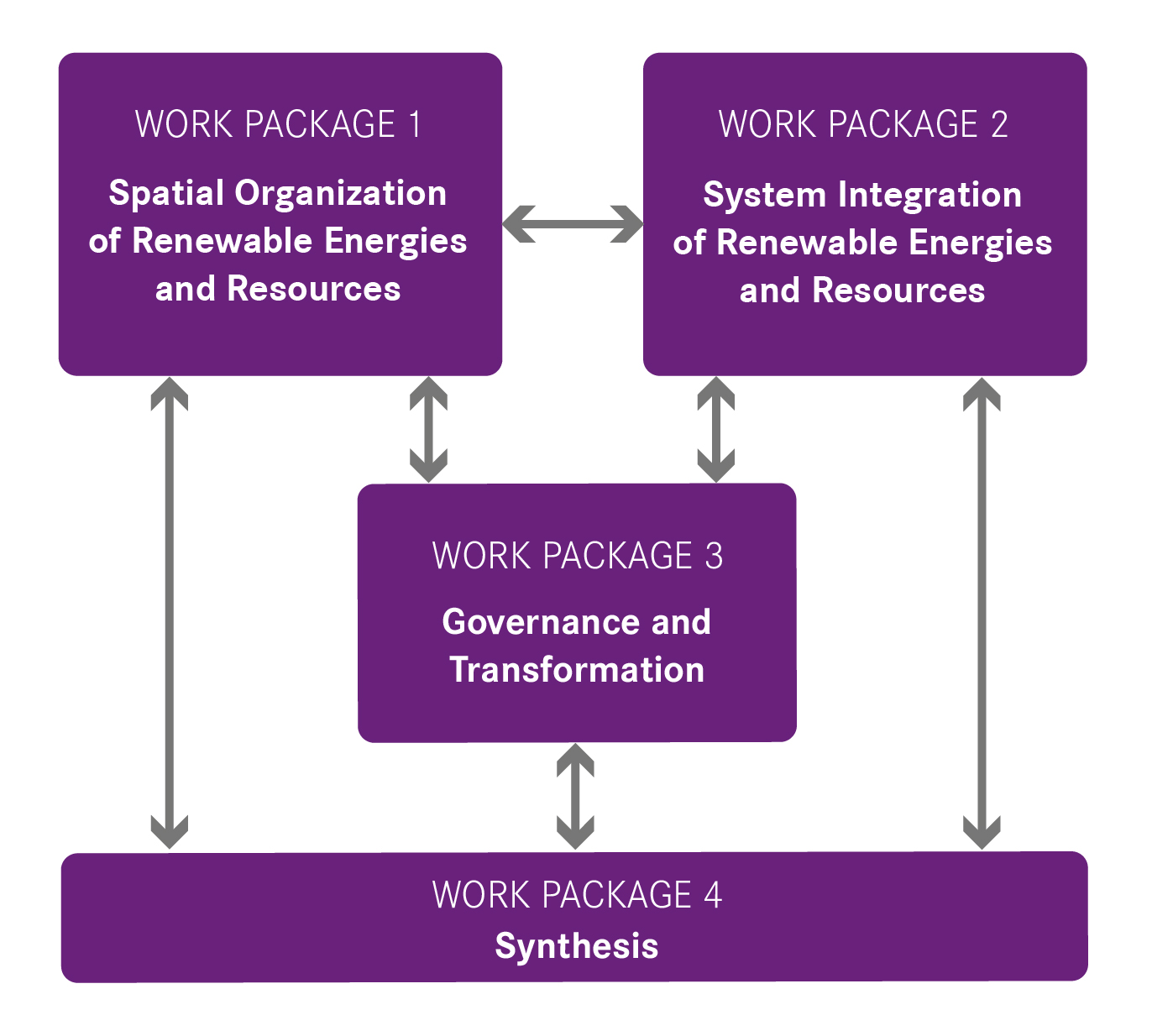EnergyLandUse
The integrated project „EnergyLandUse“ has been completed. Within the project, colleagues from different research areas cooperated on an interdisciplinary basis and investigated various aspects of renewable energies. The activities and work packages they dealt with during the project period (2014−2020) are presented on the following webpages.
In the next period of the Helmholtz Association's "Programme-Oriented Funding" (POF IV), research on energy landscapes and energy systems will continue. You will find more information here shortly.
Germany’s energy transition is under intense international scrutiny. Diverse goals are linked to this transformation, such as climate and resource protection, green growth, cleaner production and a secure and more democratic energy provision. If successful, it provides a lead example on how to rebuild an important sector of a thoroughly industrialized economy in a sustainable way.
However, the energy transition is (unlike other transformation processes) highly politically fostered and can therefore, as a field test, demonstrate potentials and risks and help to understand the crucial role of governance architecture as well as individual and collective behaviour for a successfully transforming society.
Concepts for the provision of both renewable energy and renewable materials are characterized by a more decentralized, but also more land-intensive distribution of plants and by the need to develop and implement new technologies (such as energy saving systems, energy storage systems, E-mobility, integrated biorefineries). Also, an adopted management of production and supply needs to be set up over time. This brings about important new sustainability challenges including a new quality of spatio-environmental impacts, reliability of energy supply and social compatibility. To organise the transition sustainably, it is crucial to understand the local, national and also European effects and trade-offs of the new system elements in their economical, ecological and social dimension and to organise the spatial allocation of the renewable provision accordingly.
To govern the transition, an appropriate administrative framework and monitoring systems needs to be developed and the regulatory impact needs to be evaluated, always considering the timeline of the transition process.

